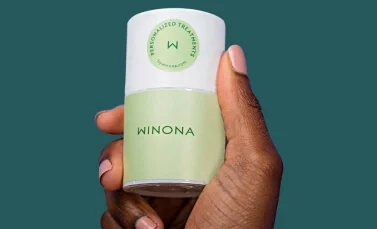Menopause and Bladder: How Are They Related?

Symptoms of Menopause Include How Often You Pee
Menopause is defined as starting when you have gone 12 months (or more) without a menstrual period. The time leading up to menopause is known as perimenopause. Typically women reach menopause in their 40s and 50s with an average age of 51.1 These ages vary widely from woman to woman.
Perimenopause for many women begins in the mid to late 30s. During perimenopause, you will likely have lots of period complications (spotting, heavy period, timing thrown off). All of this is due to changes in hormone levels. These changes during perimenopause can start years before menopause actually begins and can cause loads of symptoms. Some signs and symptoms of perimenopause and menopause, include:
Changes in your period that differs from your regular cycle.
Hot flashes, or night sweats.
Trouble with sleep, insomnia.
Lack of interest in sex, and pain during sex.
Anxiety, mood changes, and depression.
Dryness and irritation with your vagina.
Changes in bladder control and frequency of urination.
Prescription menopause relief. Delivered.

Overactive Bladder
These changes in hormones can impact your bladder and lead to issues with bladder control. Overactive bladder (OAB) is one example of issues with bladder control. Changes in your bladder control can increase your risk of developing an overactive bladder (OAB). Women with menopausal symptoms tended to have a higher risk for OAB and symptoms of OAB.1
Symptoms of OAB
OAB is a term for a whole collection of symptoms that are related to bladder control that occurs as we age, and are often related to decreased hormones.
These symptoms may include:
Having to pee more often (more than 8 times a day)
Sudden urge to urinate, often.
Difficulty getting to a bathroom without leaking urine first, frequent urine leaking.
Having to pee two or more times during the night.
Changing your activities to accommodate symptoms of OAB or urinary incontinence.
Low Estrogen Affects Your Bladder and Urethra
OAB due to menopause may be due to changing estrogen levels.1 Estrogen is the primary female sex hormone that is produced by your ovaries. Estrogen doesn’t just regulate your periods and reproductive system it also affects the health of other organs. One area that often gets overlooked when talking about menopause symptoms is your pelvic muscles and urinary tract including your bladder.
Before perimenopause, you likely had a steady supply of estrogen that helped to maintain the strength and flexibility of your pelvic floor, your bladder, and the tissues that keep urine in or help move it out of your body. During perimenopause and menopause, your estrogen levels drop dramatically. This can cause your urinary tract tissues to weaken. Low estrogen levels may also contribute to muscular pressure around your urethra which would impact your ability to ‘hold it.’
UTI and menopause results to changes in hormone levels. During perimenopause and menopause, there is an increased risk of urinary tract infection. As you likely know, UTIs can have similar symptoms as OAB, so it is important to know which one you are dealing with.
Childbirth, Trauma, and Other Causes
As we age, our pelvic floor ages too and can lead to disorders including OAB and urinary incontinence. Incontinence means that you leak urine. One of the most obvious things that can impact our bladder is whether or not we have been pregnant. Pregnancy and childbirth can change the tone of your vagina, your pelvic floor muscles, and the ligaments that support your bladder.
Another cause of changes to our urinary system includes possible nerve damage from diseases and trauma. This damage can cause a disconnect between the brain and the bladder.
And finally, Medications, alcohol, and caffeine can also affect the ability of the brain to properly signal the bladder; leaks and even overflow can occur.
Feel like yourself again.

What can you do to manage OAB?
If you have OAB, we get it. It is really awful when you may feel the need to go to a bathroom — a lot. Fortunately, there are steps you can take to manage OAB and lower your risk of accidents. According to the National Association for Continence, 25% of adult women experience urinary incontinence.2
Treatments for OAB are:
Kegel exercises can help stop your bladder’s involuntary contractions. It can take 6-8 weeks before you notice an effect.
Bladder retraining is when you don’t go to the bathroom every single time you feel the urge. This may help with gradually building up the amount of time you can wait to go to the bathroom and can lower your risk for incontinence.
Double voiding may seem contrary to the option above, but why not try? Wait a few minutes after you pee and go again to make sure that your bladder is completely empty.
Wearing liners or absorbent pads may help with incontinence so that you don’t have to be fearful.
Extra weight puts pressure on the bladder, so weight loss can help ease symptoms.
Estrogen in the form of HRT. Estrogen creams, pills, or patches can be used to treat OAB. Some women say that topical estrogen treatments help control their urinary leaking and the urge to go. These treatments may improve the flow of blood and strengthen the tissue around your urethra.
Summary
Don’t let OAB interfere with how you enjoy everyday activities. Treatments for OAB are effective and can help you to live a healthy, active life. As we age and suffer from OAB and incontinence, women may have decreased self-confidence, poor sleep quality, and their overall sense of well-being is diminished. If you notice a change in your urinary or bladder symptoms, check in with a Winona physician today. If you often feel a sudden urge to urinate that’s hard to control, you may have OAB.
“This article is for informational purposes only and does not constitute medical advice. The information contained herein is not a substitute for professional medical advice. Always talk to your doctor about the risks and benefits of any treatment.”
